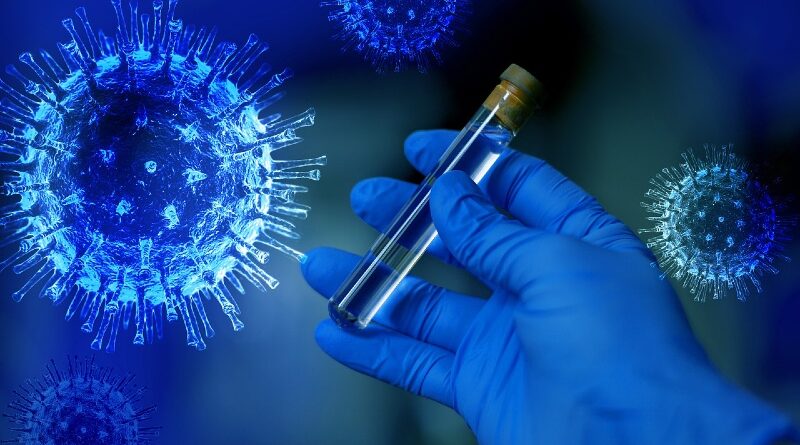Jenkins: Dallas County At ‘Very Dangerous Point’ In Pandemic
As the U.S. continues to report record COVID-19 cases and Dallas County hits a “dangerous point” in the pandemic, here’s what you need to know today:
- Dallas County reports 1,304 COVID-19 cases, three deaths;
- Abbott talks COVID-19 in Texas, treatments, vaccines;
- CDC: Masks can protect both wearers, those around them.
Dallas County Reports 1,304 COVID-19 Cases, Three Deaths
Dallas County Health and Human Services Wednesday reported 1,304 additional cases of COVID-19–926 confirmed and 378 probable–and three more deaths or a cumulative total of 105,377 cases and 1,138 deaths.
There’s a cumulative total of 8,931 probable cases and 19 probable deaths.
The additional deaths reported Wednesday include a Dallas man in his 60s without underlying conditions, a Dallas man in his 70s, and a woman in her 80s who lived in a Dallas long-term care facility. Unless noted, they had underlying health conditions.
Of the total confirmed deaths reported to date, about 24% have been associated with long-term care facilities.
“Over the last 10 days, five of those days have been above 1,000 cases a day,” Dallas County Judge Clay Jenkins said. “Yesterday, we saw the second biggest jump in hospitalizations for COVID that we’ve experienced thus far. We are at a very dangerous point in the fight against COVID. We are staring down the barrel of the largest spike that we have seen to date in COVID cases.
“It’s imperative that everyone avoid crowds to the fullest extent possible and wear their mask whenever outside their home,” he added. “It is also incredibly important that to the fullest extent possible, people telecommute in their work.”
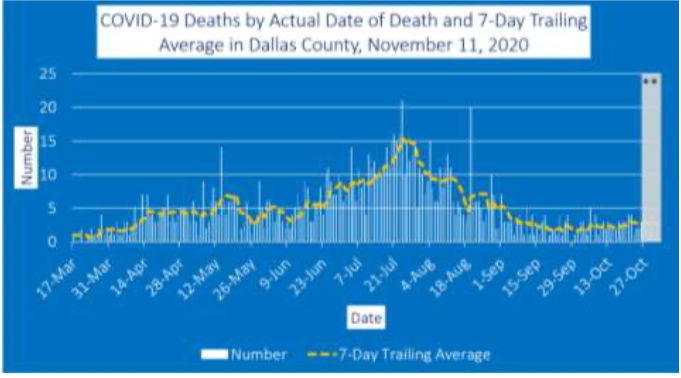
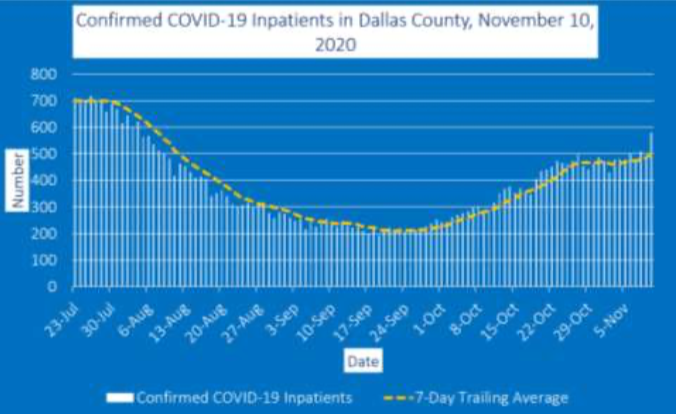
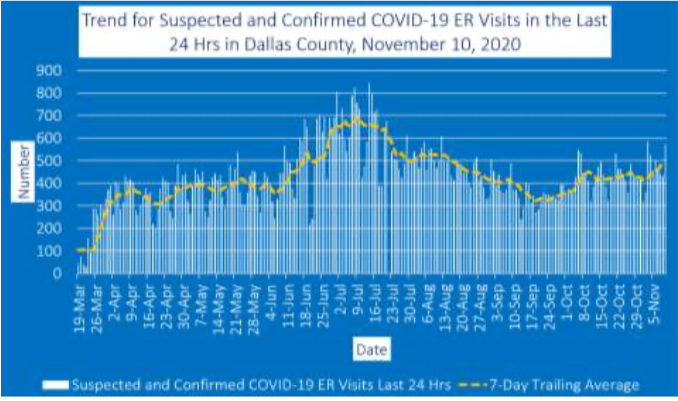
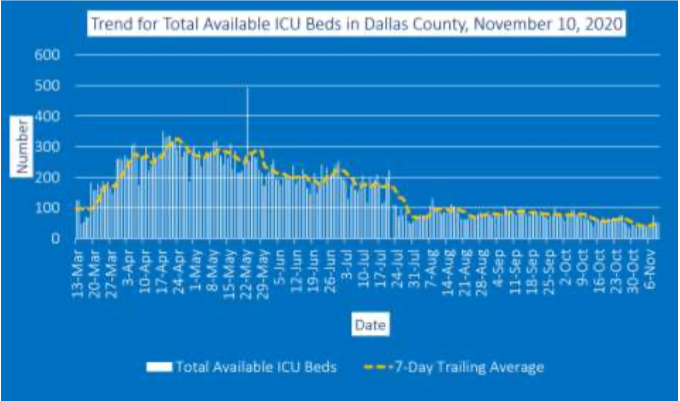
Additionally, the county says the number of individuals in acute care increased by 100 in a 24 hour period.
Additionally, the county reported there were 579 COVID-19 patients in acute care in Dallas County for the period ending Nov. 10. The number of emergency room visits for COVID-19 like symptoms in Dallas County was 574 for the same time period, which represents around 20% of all emergency department visits in the county according to information reported to the North Central Texas Trauma Regional Advisory Council.
The percentage of respiratory specimens testing positive for the virus that causes COVID-19 remains high, the county says, with 14.8% of symptomatic patients presenting to area hospitals testing positive in the week ending Oct. 31.
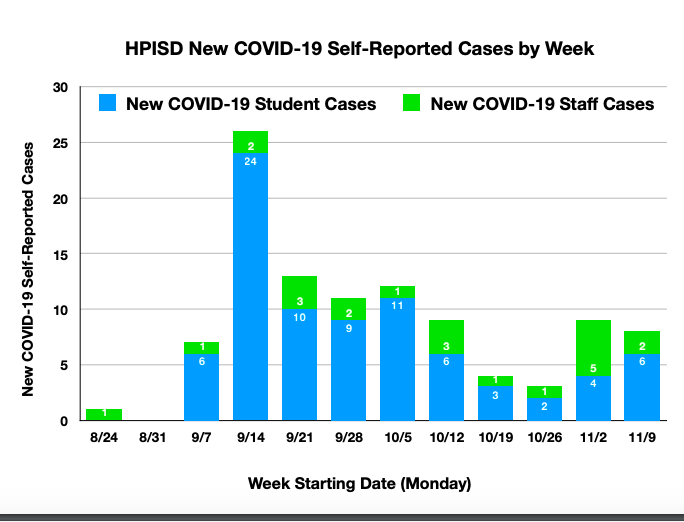
A provisional total of 608 confirmed and probable COVID-19 cases were diagnosed in school-aged children (5 to 17 years) during the week ending Oct. 31, an almost two-fold increase from the numbers of children diagnosed in this age group four weeks earlier. Highland Park ISD reported one case among a staff member assigned to Armstrong Elementary, one case in a student there, one case in a student at Bradfield Elementary, three cases among staff members assigned to University Park Elementary, four among students there, one case in a staff member at McCulloch Intermediate, two among students there, one case among a student at Highland Park Middle School, and two among students at Highland Park High School, according to the district’s COVID-19 page.
Dallas ISD reported 896 cases districtwide, 357 among campus staff, 92 among central staff, and 447 among students, according to the district’s COVID-19 dashboard.
Abbott Talks COVID-19 In Texas, Treatments, Vaccines
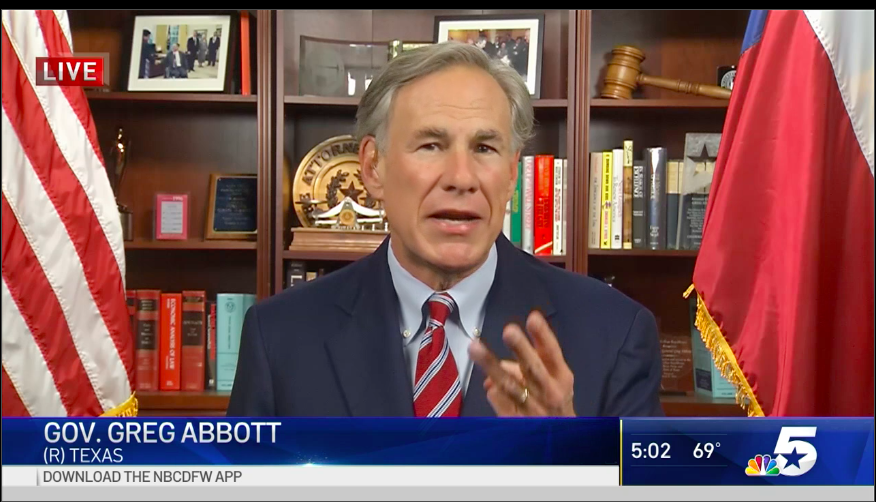
Gov. Greg Abbott told NBCDFW Wednesday that he had no plans to change his executive orders amid surging COVID-19 cases, but noted that his order prompts rolling back of openings if a hospital region has more than 15% of their beds occupied with COVID patients.
“When that happens, that causes a further reduction of business openings, including a closing of bars, but also, it leads to a reduction in non-essential surgical procedures to make sure that more beds will be available for anyone who contracts COVID,” Abbott told the station.
Abbott also noted the recent encouraging news about the effectiveness of COVID-19 vaccine candidates, and antibody drugs by Eli Lilly and Regeneron that could be distributed as soon as this month.
“That means that fewer people will be getting COVID, people will be recovering from COVID quicker, and fewer people will be hospitalized, and deaths will go down,” he continued.
The U.S. Food and Drug Administration authorized the immediate use of the Eli Lilly antibody drug Monday.
The FDA said the drug is authorized for patients at high risk of progressing to severe COVID-19, including people 65 and older, or who have certain pre-existing medical conditions.
Lilly is expected to immediately ship approximately 80,000 doses across the country, including Texas, at no cost to the states. Lilly should have up to one million doses by the end of the year.
Regeneron Pharmaceuticals also requested FDA emergency use authorization of its COVID-19 antibody medical treatment.
The federal government has agreed to buy hundreds of thousands of doses of the two new treatment drugs and will be in charge of allocating supplies to the states, which will in turn determine distribution to hospitals and healthcare facilities. It is likely that the doses will be allocated to states and U.S. territories based on their share of hospitalized and infected patients, according to a Tuesday announcement from Abbott’s office.
Pfizer’s vaccine is expected to become available as soon as late November for certain groups.
CDC: Masks Can Protect Both Wearers, Those Around Them
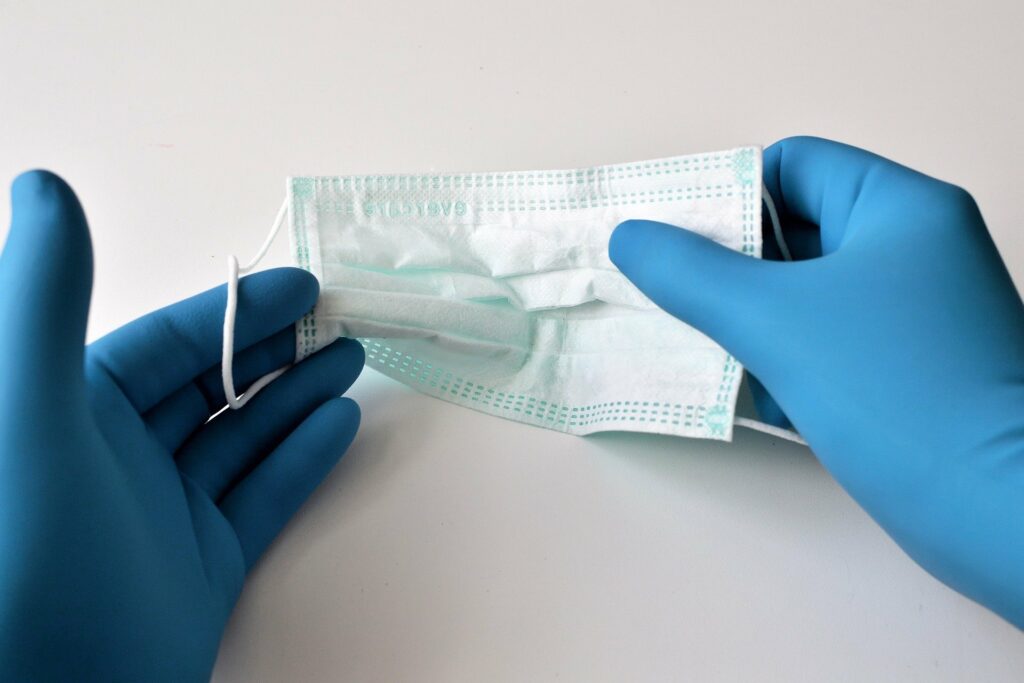
Wearing a mask can help protect the wearer, not just those around them, according to new guidance from the Centers for Disease Control and Prevention as reported by multiple media outlets.
Masks help block virus particles exhaled by the wearer and help block infectious droplets from others, according to the new guidance as reported by CNN.
The new guidance cites a number of studies showing that masks reduce the risk of transmitting or catching the virus by more than 70% in various instances, CNN reports.
“Adopting universal masking policies can help avert future lockdowns, especially if combined with other non-pharmaceutical interventions such as social distancing, hand hygiene, and adequate ventilation,” the CDC said as reported by the network.
The agency also noted increasing universal masking by 15% could prevent the need for lockdowns and reduce associated losses of up to $1 trillion or about 5% of gross domestic product.

